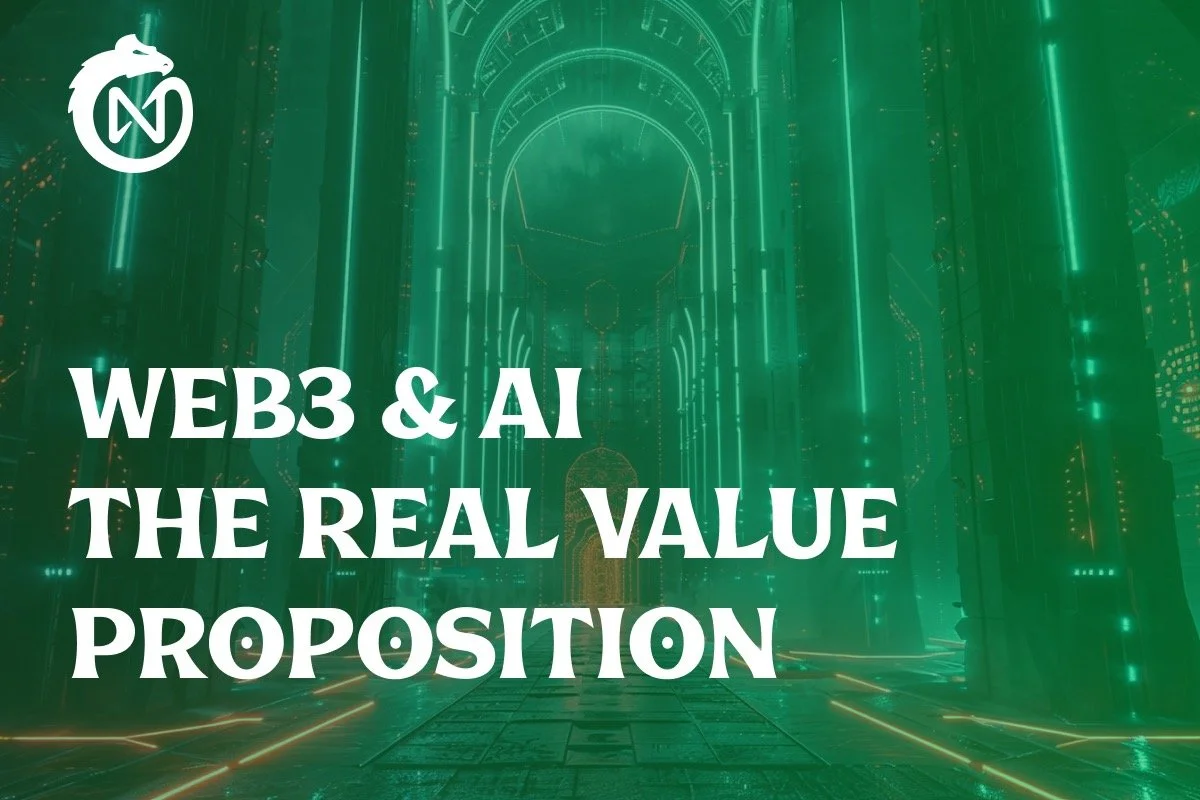Web3 and AI: The Real Value Proposition
The intersection of Web3 and AI remains a mystery for most people. Common questions include: ‘How does blockchain help AI?’ ‘Why does AI need to be on a blockchain?’ and ‘Are there any live AI products on blockchain today?’ While we remain in the very early innings of the AI revolution, there are a number of clear cut value propositions that emerge at the intersection of Web3 and AI.
Value Proposition #1: Transparency
Closed-Source AI, as the name suggests is a black box - no one except those controlling the LLM’s have visibility or understanding of how the AI operates. In some cases, as Illia pointed out at the Decentralized AI summit at ETH Denver, this can easily morph into a form of surveillance capitalism whereby advertisers pay the closed-source AI company to prioritize their product or service in the AI’s responses.
What car should I buy? What food for my meal plan? Where should I buy a home? In Illia’s scenario the lack of transparency in current AI systems is the basis for a system of exploitation and manipulation. Essentially a rerun of what we have seen with Internet 2.0 and Big Tech controlling narratives and building business models on user interest and advertising.
Web3 x AI, has the potential to at the very least indicate how an AI model runs in a fully transparent manner - such that a user can at least understand where the model is biased and who is paying it. Downstream, On-chain governance of AI models, has the potential to enable a form of visibility, voting, and shared responsibility into how an AI will behave and who has the power to change what parameters in an LLM. While this could be done off-chain, the nature of smart-contracts makes it a guarantee.
Value Proposition #2: Payments
Will an AI ever have its own bank account at JP Morgan? Or pass KYC to use a specific application? Most likely not, with how the legacy financial and business world operates. As Illia explains in the video below, whether the future of AI is open-source, closed-source, or decentralized - an AI agent will perform better on-chain because of its ability to manage payments and to be accessed globally outside of the tedious and slow parameters of the existing financial system.
Using a blockchain like NEAR, not only enables the management of an AI agent via a sub-account or with manual human oversight, but it also enables AI-agent payments across any chain using NEAR’s chain abstraction infrastructure.
Value Proposition #3: Safety
AI safety is currently known in reference to AGI and the power of an LLM to take certain actions. But it equally applies to data privacy and ownership. Blockchain enables safer AI through different mechanisms:
AI governance can be done on-chain, with permissions defined via smart contract, and public visibility into changes or voting on how the AI should evolve.
Blockchain enables the monetization of local or personal AI products that are not ‘closed-source’ or centralized. This means that personal AI assistants, body monitors, or business helpers can be exclusively controlled by you - without a centralized company limiting your service access or stealing your personal information.
Illia speaks directly to these benefits below:
Value Proposition #4: Network Effects
Network effects are still not understood both in closed source AI, or in Web3. Web3 has encompassed network effects in talking about the benefits of composability: The capacity for applications to seamlessly and automatically communicate and interact with one another via smart contract.
AI network effects are similar on-chain, insofar as AI in Web3 guarantees universal access, smart contract integration with AI-Agents, and seamless value transfer between AI and non-AI actors (dApps, humans, or automatic services).
While the Web3 AI product grid helps outline where we see products and protocols emerge at the intersection of AI and blockchain, these value propositions indicate where we expect product market fit, and value creation to emerge within that product grid.


